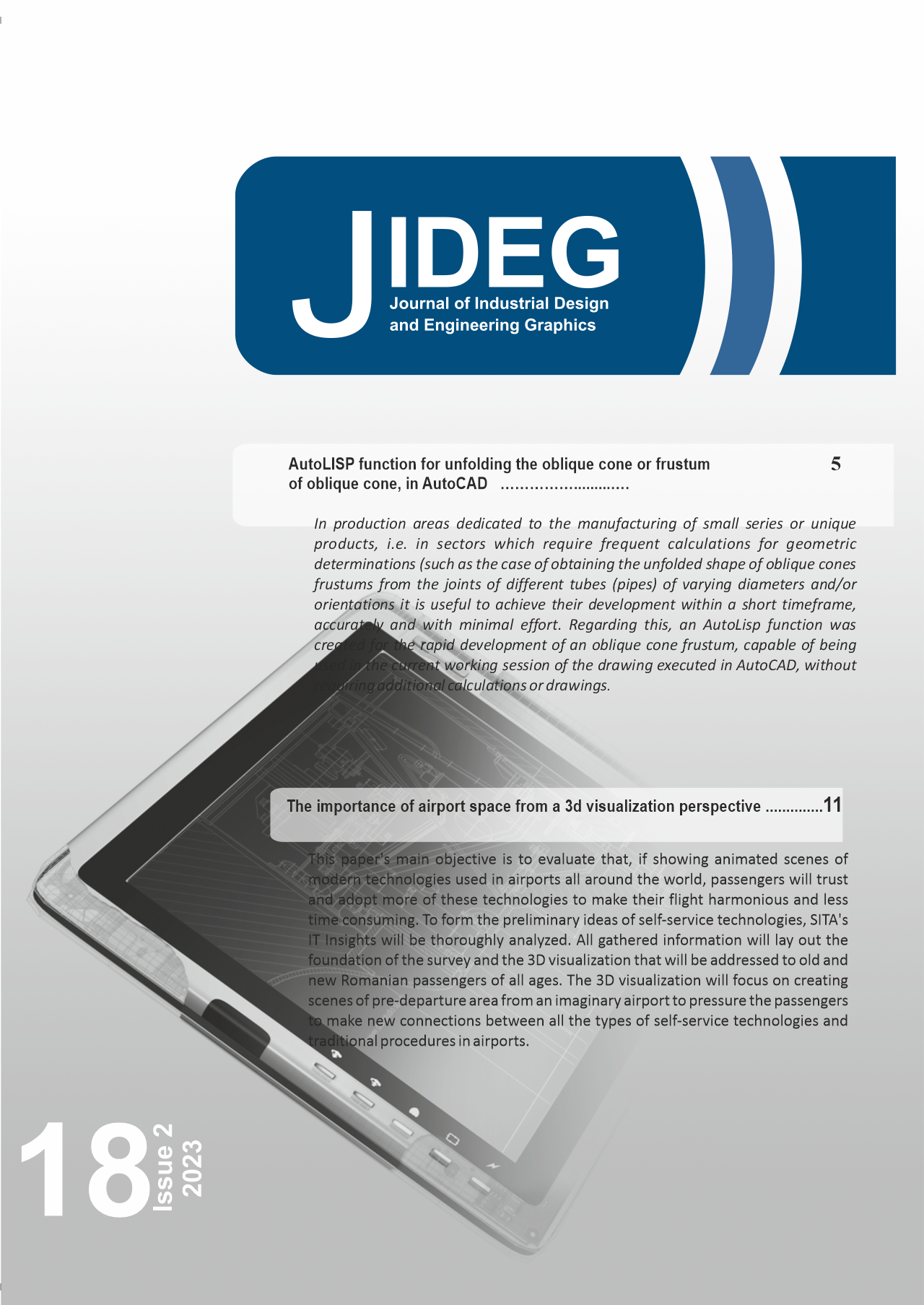A NEW SOLUTION TO REDUCE THE SPREADING RISK OF AIRBORNE INFECTIONS IN AIRCRAFT CABIN
Keywords:
aircraft, pandemic, Computational Fluid Dynamics (CFD), ventilation, streamlines, velocity fieldAbstract
At present, due to the pandemic context, air transport is being re-analysed. Especially the economy class, where most passengers travel, having six people in a row of seats becomes risky because there is no minimum distance between people. If a person is infected, they can transmit the virus very easily, even if they wear a mask. The project also contains an assessment of the possibility of transmitting the virus through the cabin ventilation system. Two ventilation solutions are simulated in Ansys Fluent, both for the current cabin configuration of a one-aisle aircraft. Next, a solution that would improve the health safety on board is proposed. The new seats and cabin configurations are designed. Firstly, the middle seat replaced with a luggage storage box, large enough to carry some "hold" luggage and secondly, a plexiglass panel support, which can be mounted on the seat backside is conceived. Finally, the air flow in aircraft cabin for this new arrangement is analysed.
Downloads
References
Mangili, A., Gendreau, M. A. (2005). Transmission
of infectious diseases during commercial air travel,
Lancet 2005, Vol. 365, March 12, pp. 989–996, ISSN
-6736.
Wilson, N. M., Norton, A., Young, F. P., Collins, D.
W. (2020). Airborne transmission of severe acute
respiratory syndrome coronavirus-2 to healthcare
workers: a narrative review, Anaesthesia, Vol. 75,
Aug. 2020, pp. 108-1095, Jon Wiley & Sons, ISSN
-2409.
ASHRAE (2014). Position Document on Airborne
Infectious Diseases. Atlanta, GA: ASHRAE.
Aliabadi, A.A., Rogak, S.N., Bartlett, K.H., Green.
S.I. (2011). Preventing airborne disease
transmission: Review of methods for ventilation
design in health care facilities. Advances in
Preventive Medicine, Vol. 2011, ID 124064, pp. 1-
, https://doi.org /10.4061/2011/ 1240641–21.
Mboreha C.A., Abdallah C.S., Kumar, K. (2020).
Risk and preventing of COVID 19 in a commercial
aircraft cabin: an overview, International Journal of
Engineering Applied Sciences and Technology, Vol.
, Issue 3, pp. 661-670, ISSN 2455-2143.
Kuhn, M., Bosbach, J., Wagner, C. (2009).
Experimental parametric study of forced and mixed
convection in a passenger aircraft cabin mock-up,
Building and Environment, Vol. 44, No. 5, pp. 961-
, ISSN 0360-1323.
Farag, A. M, Khalil, E. E. (2015). Numerical analysis
and optimization of different ventilation systems for
commercial aircraft cabins, IEEE Aerospace
Conference 2015, pp. 1-12.
Zhang, Z., Chen, X., Mazumdar, S., Zhang, T., Chen,
Q. (2009). Experimental and numerical investigation
of air flow and contaminant transport in an airliner
cabin mockup. Building and Environment, Vol. 44,
No. 1, pp. 85-94.
Elmaghraby, H.A., Chiang, Y.W., Aliabadi, A.A.
(2018). Ventilation strategies and air quality
management in passenger aircraft cabins: A review
of experimental approaches and numerical
simulations, Science and Technology for the Built
Environment, Vol. 24, No. 2, pp. 160-175.
*** AIRBUS A320, Aircraft Characteristics Airport
and Maintenance Planning. (2005). AIRBUS S.A.S.
Customer Services Technical Data Support and
Services, 31707 Blagnac Cedex, France.
Scholz, D. (2021). Airbus' Cabin Air Explanations
during the Corona Pandemic – Presented, Analyzed,
and Criticized, available at: http://AERO.
ProfScholz.de, Accessed: 2023-02-15.
Danaila, A. (2022). Research Rapport No. 2,
University Politehnica of Bucharest, unpublished.
Downloads
Published
Issue
Section
License

This work is licensed under a Creative Commons Attribution-NonCommercial 4.0 International License.







